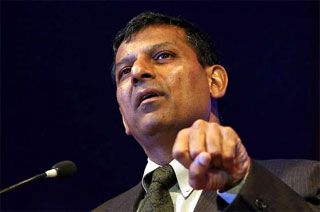It would be beneficial for the economy to hold on to high interest rates till inflation numbers are under control
 If the investment cycle resumes in India, then it is only a matter of time before Sensex scales 40,000, said Christopher Wood, managing director and equity strategist at CLSA.
If the investment cycle resumes in India, then it is only a matter of time before Sensex scales 40,000, said Christopher Wood, managing director and equity strategist at CLSA.
Given the current scenario, however, that is a capital ‘IF’.
There are few signs of recovery in the economy. Manufacturing output grew at a dismal rate of 0.1 per cent in the second quarter of the current fiscal as compared to the corresponding quarter last year. Analysts at Nirmal Bang expect the GDP growth in the second quarter will be tepid.
Industries and analysts alike blame high interest rate regime for the slow pickup in growth. Finance Minister Arun Jaitley, too, has joined the bandwagon to make a case for interest rate cuts. Broking firm DBS in its research note has said that "Pressure is mounting on the Reserve Bank to cut rates at its December meeting.... Jaitley's recent call to lower rates to encourage construction activity has revived expectations."
Economic data points have lined up to favour a cut in interest rates. October Wholesale Price Index (WPI) has fallen to a five-year low of 1.8 per cent. According to Motilal Oswal, Whole Price Index inflation data reveals a prevalence of month-on-month (MoM) disinflationary trend for the last two months, while there is no sign of inflation at the retail level for the last two months.
Falling oil and food prices have resulted in near zero contribution from these two segments to inflation. Current inflation numbers were also helped by base effect as September/October 2013 saw peak levels of inflation. Motilal Oswal points out that the case for a rate cut is strengthened further with latest inflation figures being well within RBI’s guidance of 8 per cent by January 2015.
RBI governor Raghuram Rajan is facing pressure not only from the government, industries and analysts but even from his colleagues at the central bank who feel it is time for a rate cut. Four of the seven external members of the RBI’s Technical Advisory Committee on Monetary Policy wanted a rate cut at the last policy meet itself, which Rajan overruled.
However, given Rajan’s track record, it is unlikely that he will buckle under pressure. He has data to support his stance. First, inflation numbers have fallen mainly on account of a high base effect and low fuel and food prices. Oil price are not in control of Indian government and could go up anytime. To some extent, food inflation is down on account of seasonal factors; the recent poor kharif crop output can push up food inflation again. The impact of the base effect would be reflected more accurately in the next quarter.
In its report on Inflation, Anand Rathi says that a global deflationary environment and subdued domestic demand should put further downward pressure on inflation, but as the economy turns around core inflation could harden.
Little would be achieved if the central bank reduces interest rates and inflation shoots up as demand picks up, forcing RBI to cut interest rate again. It would be prudent and beneficial for the economy in the long run to hold on to interest rate for another quarter till inflation numbers are well under control.











